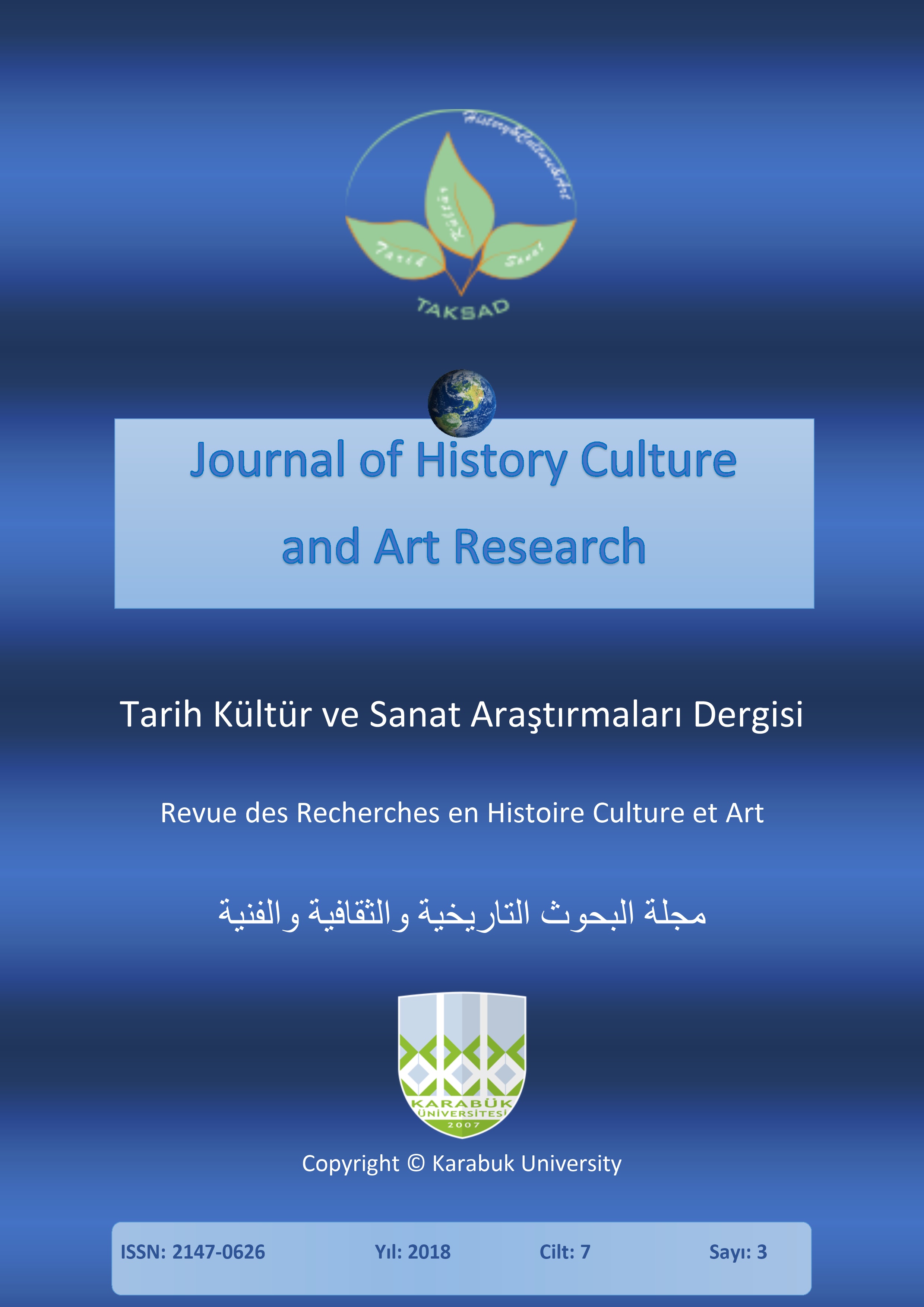Comparative Analysis of the Yakut-Mongolian Parallels (the Case of the Horse Coat Color)
DOI:
https://doi.org/10.7596/taksad.v7i3.1530Keywords:
Horse coat color, Comparative study, Lexical and semantic features, Lexical parallels, Stable lexical meanings, One-component stems, Two-component stems.Abstract
The purpose of this article is to identify the phonostructural and lexical-semantic features of the Yakut-Mongolian lexical parallels, denoting the names of the horse coat color. It is known that the horse is a sacred animal in the Yakut and Mongolian culture and therefore the terminology of horse breeding is very developed and rich in both languages. In the furtherance of this goal, we used several methods of research; the main ones are component and distributive analyses. We used the component analysis to reveal the lexical-semantic feature of the parallels. The lexemes were divided into three groups: a) the stability of the lexical meaning of the word; b) a partial coincidence of the lexical meaning of the word; c) a noticeable change in the lexical meaning of the word. With the help of distributive analysis, we showed the phonostructural feature of the adjectives' names, denoting the name of the horse coat colors, and also revealed ethnocultural differences and similarities. As a result of the study, 13 Yakut-Mongolian parallels were found. As is known, there are about 200 kinds of horse coat colors, and to distinguish all of them, different nations use their complex adjectives. Therefore, the Yakut-Mongolian parallels are divided into 2 categories: one-component (9 items) and two-component (4 items). When analyzing the structural type of one-component lexical parallels, it was revealed that 4 out of 9 parallels were subjected to a structural change. Of the 5 parallels with the absolute coincidence of the structural types there are three Yakut stems: "sālïr ", "būlur", "kürӓŋ ", in all probability, they are late borrowings from the Mongolian language. Component analysis has shown that preservation of the stability of lexical meanings is noted in 31% (4) parallels, a slight lexical change occurred in 39% (5) parallels, notable lexical changes - in 31% (4) parallels.
References
Antonov, N. K. (1966). About some Yakut nominal main Mongolian origin. [Proceedings of the History and Philology Faculty (Yakutsk University)], issue 1.
Antonov, N. K. (1971). Materials on the historical lexicon of the Yakut language. Yakutsk. Book. publishing house.
Bachaeva, S. E. (2016). Interpretations of horse coat color names. Vestnik KIGI RAN. № 1. 202–211.
BAMRS (2002). The Great Academic Mongolian-Russian Dictionary. Edit. by G. Pyurbeev. V 4-h t. / otv. red. G. C. Pjurbeev. Vol. 1. A–G.; Vol. 2. D–O.; Vol. 3. Ө–F. M.: Academia, 2001; Vol. 4. H–Ja. M.: Academia.
Eginova, S. D. (2014). Figurative adjectives of the Yakut language (in comparison with the Buryat and Kirghiz languages). Novosibirsk: Nauka.
Gogolev, A. I. (1993). Yakuts: Problems of ethnogenesis and the formation of culture. Yakutsk.
Kaluzhinskij, St. (1961). Some questions of Mongolian borrowings in the Yakut language. Proceedings of the Institute of Nuclear Physics of the USSR Academy of Sciences. Yakutsk: Book publishing house, Issue. 3 (8). 5-21.
Levin, G. G. (2013). Historical ties of the Yakut language with the ancient Turkic languages of the 7th-9th centuries. (in a comparative aspect with Eastern Turkic and Mongolian languages): monograph. Yakutsk: Publishing House of NEFU.
Pekarskij, Je. K. (1959). Dictionary of the Yakut language]. – L .: Publishing House of the Academy of Sciences of the USSR.
Radloff, W. (1908). Die jakutis che Sprache in ihrem Verhaltnisse Süden Türksprachen / W. Radloff. – SPb.: Kaiserliche AkademieWissenschaft, 86 p.
Rassadin, Vol. I. (1980). Mongolian-Buryat borrowings in the Siberian Turkic languages. M.: Nauka.
Rassadin, Vol. I. (1981). Problems of commonality in the Turkic languages of the Sayano-Altai region. Turkic collection. 1977. Moscow.
Sandi Ransford (2007). An illustrated encyclopedia of horses and ponies]. – SPb.: Astrel' SPb.
Shamaeva, A. E. (2012). Mongolian parallels of the dialectal vocabulary of the Yakut language: the author's abstract. diss. ... to. Philol. n.]. Yakutsk.
Slepcov, P. A. (2008). Steps and problems of Yakut linguistics. Yakutsk.
The Yakuts (Sakha) (2013). Ed. by A.N. Alekseev, E.N. Romanova, Z.P. Sokolov. – M.: Nauka.
TSJaJa (2011). Explanatory Dictionary of the Yakut language. In 15 tons / Ed. P.A. Sleptsova. Vol. I. Novosibirsk. Nauka, 2004. (Letter A), Vol. II - Novosibirsk: Nauka, 2005. - 912 p. (Letter B), t. Vol. VI: (Letter L, M, N) - Novosibirsk: Nauka, 2009. - 519 p., Vol. VIII: (Letter C) - Novosibirsk: Nauka.
Ubrjatova, E. I. (2011). Studies on the Turkic languages. Selected works. Novosibirsk: RIC NGU.
Downloads
Published
How to Cite
Issue
Section
License
All papers licensed under Creative Commons 4.0 CC-BY.- Share — copy and redistribute the material in any medium or format
- Adapt — remix, transform, and build upon the material for any purpose, even commercially.
Under the following terms:
Attribution — You must give appropriate credit, provide a link to the license, and indicate if changes were made. You may do so in any reasonable manner, but not in any way that suggests the licensor endorses you or your use.
- No additional restrictions — You may not apply legal terms or technological measures that legally restrict others from doing anything the license permits.







